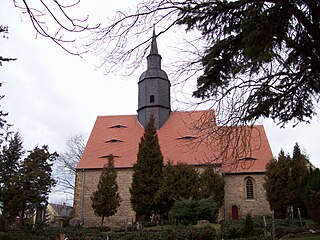
Christian Gottfried Ehrenberg, German naturalist, zoologist, comparative anatomist, geologist, and microscopist, was one of the most famous and productive scientists of his time. Ehrenberg was an evangelist.

Johann Christoph Friedrich Klug, was a German entomologist. He described the butterflies and some other insects of Upper Egypt and Arabia in Christian Gottfried Ehrenberg and Wilhelm Friedrich Hemprich's Symbolæ Physicæ. He was professor of medicine and entomology in the University of Berlin where he curated the insect collections from 1810 to 1856. At the same time he directed the Botanic Garden in Berlin which contains his collections. Klug worked mainly on Hymenoptera and Coleoptera. The plant genus Klugia was named in his honour as well as the butterflies Geitoneura klugii and Heliophisma klugii.

The Treaty of Templin was concluded on 24/25 November 1317, ending a war between the Margraviate of Brandenburg and Denmark, the latter leading a North German alliance. During this war, Brandenburgian margrave Waldemar and his troops were decisively defeated in the 1316 Battle of Gransee, fought at Schulzendorf between Rheinsberg and Gransee. After the battle, Brandenburg was forced to negotiate a truce. The treaty of Templin was signed a year later by Danish king Erich VI Menved, his ally duke Henry II of Mecklenburg, and Waldemar.
Akademie Verlag is a German scientific and academic publishing company, founded in 1946 in the Soviet-occupied eastern part of divided Berlin to facilitate the publication of works by and for the German Academy of Sciences Berlin.

The Ore Mountain passes are crossings and passages over the crest of the Ore Mountains in Central Europe, over which tracks, roads, railway lines and pipelines run from the Free State of Saxony in the Federal Republic of Germany to Bohemia in the Czech Republic and vice versa.

The Müglitz is a river, about 49 km (30 mi) long, and a left tributary of the Elbe in the German state of Saxony.

Hohnstein Castle is a medieval castle in the village of the same name, Hohnstein in Saxon Switzerland in the Free State of Sachsen in East Germany.
The Schwarzbach railway was a 750 mm Saxon narrow-gauge railway in Saxon Switzerland. It began in Goßdorf-Kohlmühle station on the Sebnitz Valley railway and ran along the valley of the Schwarzbach to Hohnstein.

Bad Schandau station is a minor junction station in Bad Schandau in the German state of Saxony. The station is located on the south bank on the Elbe on the Děčín–Dresden-Neustadt railway and it is also the terminus of the Bautzen–Bad Schandau railway. The town is located on the north side of the river and is connected to the station by a ferry and a road bridge.

Georg Maurer was a German poet, essayist, and translator. He wrote under the pseudonyms Juventus, murus, and Johann Weilau.

The Holy Way came about as a result of the canonization of Bishop Benno of Meissen. It led from Bohemia to Meissen and ran between Grillenburg and Wilsdruff in the present-day district of Sächsische Schweiz-Osterzgebirge in the opposite direction and parallel with the Saxon St. James' Way. Original sections of the route have survived, for example in the Tharandt Forest between Grillenburg and Spechtshausen.
Barbara Metselaar Berthold is a German photographer and filmmaker.

Together with the Hussars and Uhlans, the Imperial and Royal Dragoons made up the cavalry of the Austro-Hungarian Army from 1867 to 1914.

Johannes Böhm (1857–1938) was a German geologist and palaeontologist.

Helmut Müller-Enbergs is a German political scientist who has written extensively on the Stasi and related aspects of the German Democratic Republic's history.
An unofficial collaborator or IM or, euphemistically, informal collaborator was an informant in the German Democratic Republic who delivered private information to the Ministry for State Security. At the end of the East German government, there was a network of around 189,000 informants, working at every level of society.
Ilko-Sascha Kowalczuk is a German historian and author. His work is focused on the German Democratic Republic and its Ministry for State Security.

Wolf Caspar Klengel, from 1664 von Klengel, was a German architect in Saxony,
Horst Bartel was a German historian and university professor. He was involved in most of the core historiography projects undertaken in the German Democratic Republic (1949–1989). His work on the nineteenth-century German Labour movement places him firmly in the mainstream tradition of Marxist–Leninist historical interpretation.
Gerhart Hass was a German historian. His approach reflected the Marxist prism through which East Germany's historical establishment viewed their subject. He worked at the History Institute, part of the Berlin based (East) German Academy of Sciences and Humanities, where from 1974 he was a professor. His work concentrated on the History of Fascism in Europe and the Second World War.
















